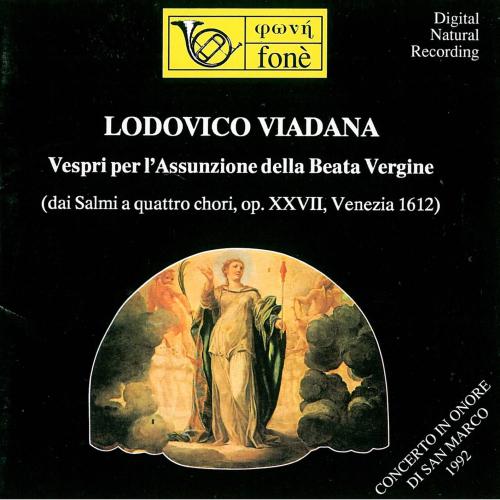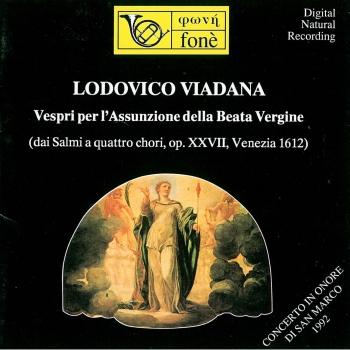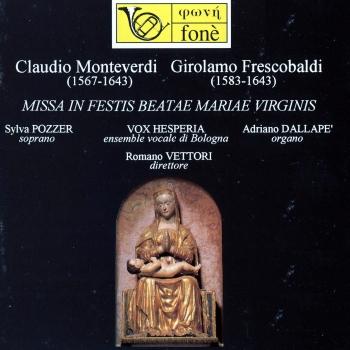
Lodovico Viadana: Vespri Per L'Assunzione Della Beata Vergine (Remastered) Vox Hesperia & Romano Vettori
Album info
Album-Release:
1992
HRA-Release:
20.02.2017
Album including Album cover Booklet (PDF)
- Lodovico Viadana (1560-1627):
- 1 Toccata Prima 02:42
- 2 Deus in adjutorium / Domine ad adjuvandum 02:26
- 3 Assumpta est Maria in coelum 00:35
- 4 Dixit Dominus 05:42
- 5 Assumpta est Maria in coelum 00:35
- 6 Maria Virgo assumpta est 00:47
- 7 Laudate pueri 07:26
- 8 Recitar Primo 04:08
- 9 In odorem unguentorum 00:35
- 10 Laetatus sum 07:47
- 11 In odorem unguentorum 00:36
- 12 Benedicta filia tua 00:45
- 13 Nisi Dominus 06:04
- 14 Fuga del nono tono 02:27
- 15 Pulchra es et decora 00:42
- 16 Lauda Ierusalem 05:06
- 17 Pulchra es et decora 00:45
- 18 Ave maris stella 02:18
- 19 Plaudat nunc organis Maria 02:43
- 20 Magnificat 10:34
- 21 Canzon (IV) 02:21
- 22 Salve Regina 03:33
Info for Lodovico Viadana: Vespri Per L'Assunzione Della Beata Vergine (Remastered)
Modern scholars began to investigate possible links between polychoral techniques and the practice of spatial positioning of performaers after realizing the extent to which composers in the 1600s were influenced by the architectural spaces they were composing for, and by the concept of space in terms of an actual physical dimension whose every detail they could explore and relate to.
Lodovico Grossi da Viadana (usually Lodovico Viadana, though his family name was Grossi; c. 1560 – 2 May 1627) was an Italian composer, teacher, and Franciscan friar of the Order of Friars Minor Observants. He was the first significant figure to make use of the newly developed technique of figured bass, one of the musical devices which was to define the end of the Renaissance and beginning of the Baroque eras in music. He was born in Viadana, a town in the province of Mantua (Italy). According to a document dating from about 150 years after his death, he was a member of the Grossi family but took the name of his birth city, Viadana, when he entered the order of the Minor Observants prior to 1588 (Mompellio 2001). Though there is no contemporary evidence, it has been claimed that he studied with Costanzo Porta (Mompellio 2001), becoming choirmaster at the cathedral in Mantua by 1594. In 1597 he went to Rome, and in 1602 he became choirmaster at the cathedral of San Luca in Mantua. He held a succession of posts at various cathedrals in Italy, including Concordia (near Venice), and Fano, on the east coast of Italy, where he was maestro di cappella from 1610 to 1612 (Mompellio 2001). For three years, from 1614 to 1617, he held a position in his religious order which covered the entire province of Bologna (including Ferrara, Mantua and Piacenza).
Vox Hesperia
Coro dell'Accademia Roveretana di Musica Antica
Adriano Dallapè, organ
Romano Vettori, conductor
Digitally remastered
No biography found.
Booklet for Lodovico Viadana: Vespri Per L'Assunzione Della Beata Vergine (Remastered)











